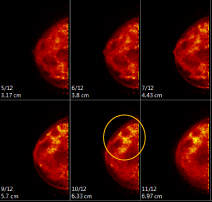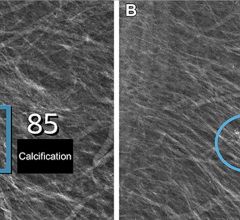
March 9, 2012 — Researchers from Boca Raton Regional Hospital in Boca Raton, Fla., showed that the FDG dose for positron emission mammography (PEM) may be reduced by up to 50 percent without impacting sensitivity. Several clinical cases utilizing an optimized dose were presented as part of this abstract at the European Congress of Radiology (ECR) in Vienna, Austria.
“These results are extremely exciting and have immediately impacted my clinical practice,” said Kathy Schilling, M.D., medical director of the Christine E. Lynn Women’s Health and Wellness Institute at Boca Raton Regional Hospital.
PEM imaging shows the location as well as the metabolic phase of a lesion. This information is critical in determining whether a lesion is malignant and influences the course of treatment by providing an ability to distinguish between benign and malignant lesions, what researchers term “specificity.” Recent studies have demonstrated that PEM has similar sensitivity and higher specificity than breast magnetic resonance imaging (MRI). The scanner is the only U.S. Food and Drug Administration (FDA)-cleared, CE-certified 3-D molecular breast imaging (MBI) device on the market with biopsy-guidance.
For more information: www.naviscan.com


 July 29, 2024
July 29, 2024 








